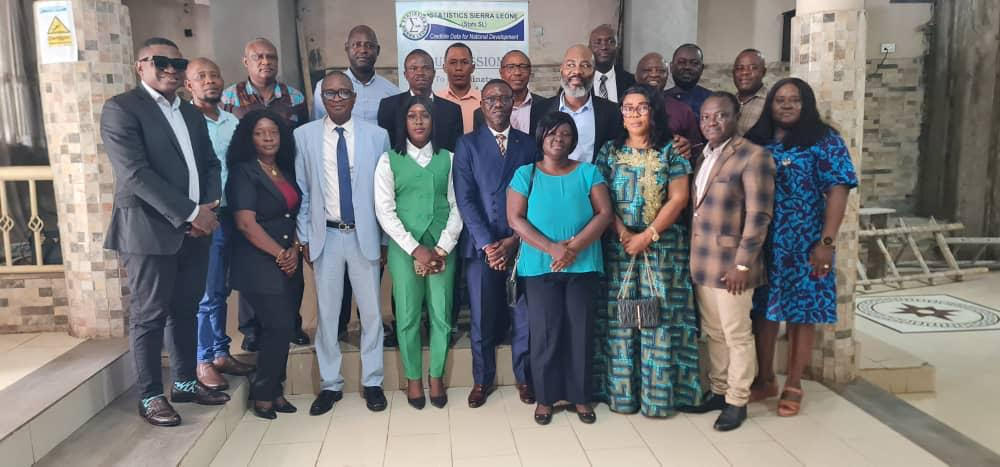The Liberia Institute of Statistics and Geo-Information Services (LISGIS) recently completed a week-long study tour at Statistics Sierra Leone’s (Stats SL) headquarters to establish a strong comparative statistical framework and methodology. This initiative aimed to learn from Stats SL’s best practices in statistical operations and enhance LISGIS’s methodologies.
The delegation, which included senior LISGIS officials, made several stops, including the Stats SL headquarters at 1B King Street, Kona Lodge, Freetown, as well as regional and district offices in Portloko and Magbukara. They also attended an ongoing training session on the Consumer Price Index (CPI) in Makeni, which enhanced their learning experience.
Leading the LISGIS delegation was Boima H. M. Sonii, the Deputy Director General of Statistics and Data Processing, accompanied by other key figures such as Bebee T. S. Wesley, the Head of Country Statistics and Information Offices; Youngor Amara, the Director of Information and Coordination; Kayloe Ruth Frank, the Geographic Information System (GIS) Specialist; Clarence G. Lamie, the Statistician of National Accounts; and Salome W. Forkpa, the Statistician of Social Statistics.
During the visit, Andrew Bob Johnny, Statistician General and CEO of Stats SL, emphasized the importance of such exchanges among national statistical institutions. He expressed his gratitude for the visit, noting that it marked a historic first for Stats SL to host a delegation from a national statistical body on a study tour.
The presentations delivered by divisional heads of Stats SL created an engaging learning environment for the LISGIS delegation. Boima H. M. Sonii, speaking on behalf of his colleagues, expressed appreciation for the warm welcome and the opportunity to interact with Stats SL’s management and staff. He emphasized that the knowledge gained during the tour would be instrumental in enhancing statistical frameworks and methodologies back in Liberia.
The study tour not only provided a deep dive into Stats SL’s comprehensive statistical practices at both national and regional levels but also fostered social interactions, capacity building, knowledge sharing, networking, and collaboration between the two institutions.
